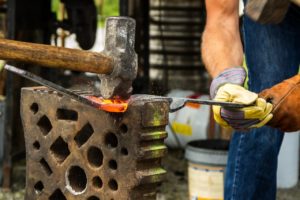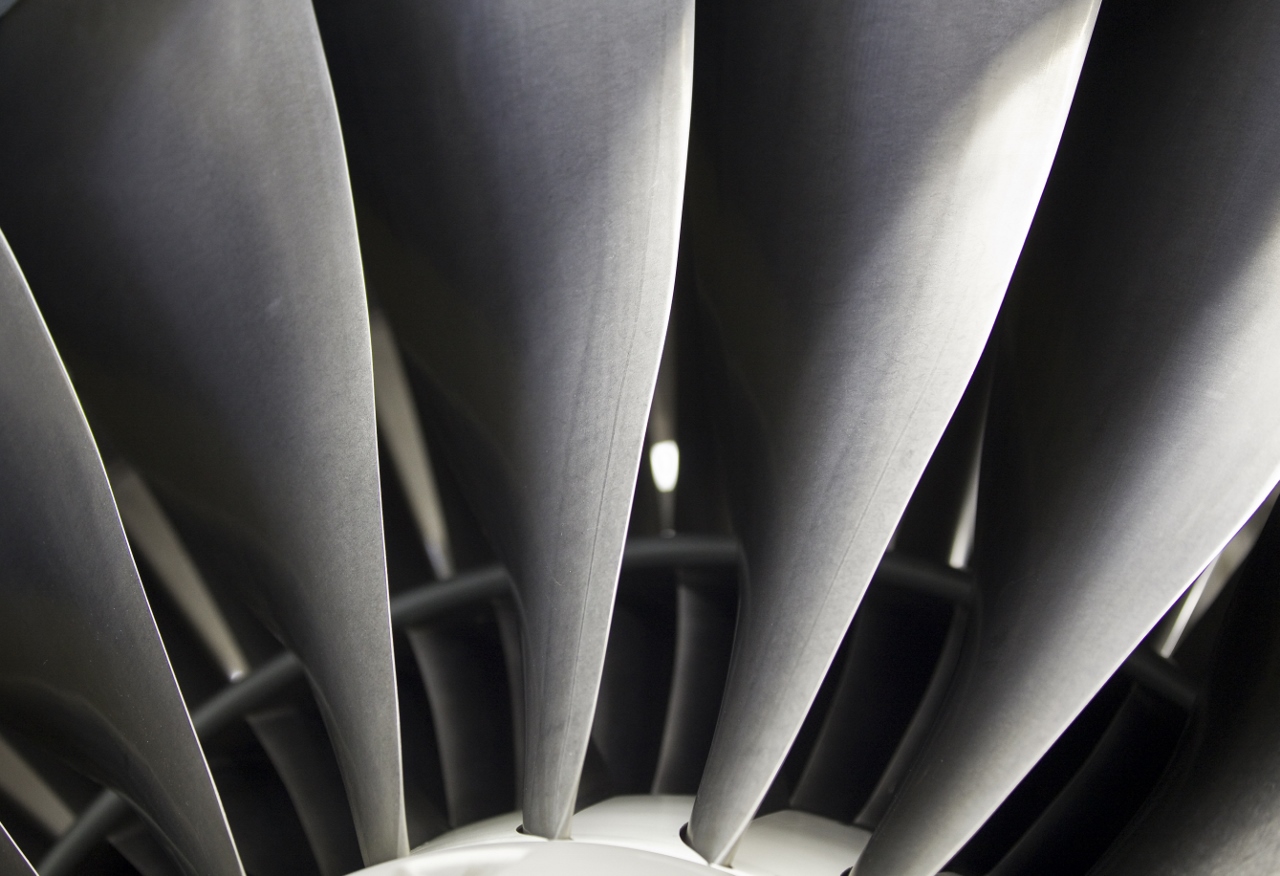Five Key Facts About Laser Peening
In the end, laser peening is a complex process with a simple goal: make metals stronger so important parts don’t fail.
Posted: August 22, 2017
By:
The World’s Most Powerful Surface Enhancement Technology
Laser peening is a fascinating marriage of electromagnetic physics and materials science. The process uses high-energy lasers to strengthen metals, producing robust components that are highly resistant to failure. Laser peening (LSP for short) plays a critical role enhancing critical parts for critical industries. You’ll find laser peened parts in aircraft engines, power plants, and heavy machinery around the world.
If you’re new to the world of laser peening, we’ve got a wealth of technical content available at your fingertips. (Check out our library of resources) But before taking that deep dive, here are five interesting facts to put this revolutionary enhancement process in perspective.
1) Light Can Strengthen Steel
It’s worth taking a step back to consider the awesome implications of peening metal with lasers. We’re using pulses of light to strengthen steel and titanium, replacing old-world peening techniques with new-age technology.

It used to be done with hammers. The rounded head of a ball peen has long been used by blacksmiths to pound and shape forged components. These brute-force blows put compressive stresses into tools and armor, but their enhancement benefits weren’t fully realized until the 1920s when a budding auto industry adopted shot peening to strengthen springs.
Shot peening is another brute-force enhancement method using high-velocity impacts to generate compressive stress. The process requires thousands of pellets or particles, launched toward a workpiece to produce a thin accumulation of surface compression. It’s messy and imprecise, and the benefits extend just fractions of a millimeter beneath the surface.
Laser peening transcends the old barrage-based methods, taking surface enhancement to another level. Coherent photon pulses impart compressive stresses many times deeper than hammers or shot pellets could ever achieve. With all due respect to the burly blacksmiths of the world, laser peening has moved metal enhancement out of the dark ages with blasts of light.
2) Plasma Does the Work

So how does light generate compressive forces in solid metal? The secret lies in the power of plasma. That’s right, plasma – the stuff stars are made of. Plasma is an ionized gas of positive and negative particles. It’s considered the fourth fundamental state of matter, and it’s generated with every pulse in the laser peening process.
Laser peening delivers a large amount of energy in several nanoseconds. That’s a few billionths of a second for a single high-energy pulse to interact with a part surface. This short burst of irradiance vaporizes a small amount of overlay material, and the vapor absorbs so much energy that the atoms are ripped apart. The super-heated plasma expands rapidly, generating incredible pressure that sends a shock wave into the part surface. The shock wave does the work of plastically deforming the metal, and the resultant compressive residual stresses prevent cracking and fatigue.
In a way, laser peening could also be considered plasma peening. The laser generates the plasma – which generates the shockwave – which induces plastic deformation – which produces compressive stresses. That may sound like a mouthful, but it’s really a beautiful cycle translating light energy into mechanical work.
3) It’s All Mechanical
Many people assume laser peening is a thermal process. Lasers are often associated with heat, and there are many thermal laser processing methods like cutting, welding, and cladding. Many 3D printing techniques also use thermal lasers to melt or fuse particles, and doctors may employ laser-generated heat for tissue cutting and removal.
However, laser peening differs from these thermal treatments in that it’s actually the mechanical shockwave that alters the material surface. LSP is designed to generate a pressure pulse via rapidly expanding plasma. That plasma can be very hot, but it’s not the heat that does the work in the material. It’s the pressure generated on the part surface as the plasma expands – millions of psi in some cases – enough to deform even the strongest metals and compress the material surface.
So how is all that pressure and energy directed into the metal? The answer is surprisingly simple.
4) A Little Water Goes a Long Way

For all the high-tech equipment and sophisticated engineering that goes into the process, you might not expect that the secret ingredient for laser peening is ordinary water. Unassuming though it may seem, water acts as a crucial confining medium for the expanding plasma, amplifying the shockwave and directing the pressure pulse into the target workpiece.
Laser peening technicians call this the “transparent overlay”. It’s applied over the part surface in a thin layer, allowing the laser pulse to pass through but confining the resultant plasma burst for maximum amplification. Without a transparent overlay, the plasma would mostly blow off into the air, producing negligible results in the target metal. The water is effectively a tamping mechanism, holding the pressure against the part surface, and sending the shockwave where we want it – into the material.
And when that water is doing its job, the part will feel it. Laser peening generates a shockwave that propagates far deeper than any other surface enhancement method.
5) The Benefits Run Deep
Superior part protection is all about deep compressive residual stresses. These beneficial internal stresses offset the damaging tensile strain that leads to component cracking and failure. Fatigue life improvements are directly proportional to the magnitude and depth of induced compressive residual stresses – metrics by which laser peening dominates competing surface technologies.

As mentioned earlier, shot peening produces compressive stresses a few tenths of a millimeter beneath the metal surface. The application is limited by the kinetic energy of the shot media, and it’s impossible or impractical to generate stronger shockwaves through shot impacts alone. Laser peening provides the advantage of tremendous energy concentration via a powerful laser. This energy density produces a high-amplitude compressive shock wave that propagates deep beneath the material surface.
As a result, average laser peening depths exceed those of shot peening by an order of magnitude. Laser peening typically produces compressive residual stresses 1-2 millimeters in depth, and the process has reached as deep as 12 millimeters (nearly half an inch!) in certain applications. These deep compressive stresses give laser peened parts serious fatigue resistance, extending component service lifetimes as much as twenty times.
In the end, laser peening is a complex process with a simple goal: make metals stronger so important parts don’t fail. From pulses of light to plasma bursts to deep propagating shockwaves – the nuances of laser peening make for fascinating science and formidable results.
Contact LSP Technologies to learn more about laser peening for metal fatigue resistance and component life extension.
Interested in Seeing More?
Tell us about your application, material, or failure mechanism and we will have one of our experts reach out to you. Our extensive library of research and years of experience gives us a unique advantage to apply a finite element analysis to help diagnose the best application for your situation.
